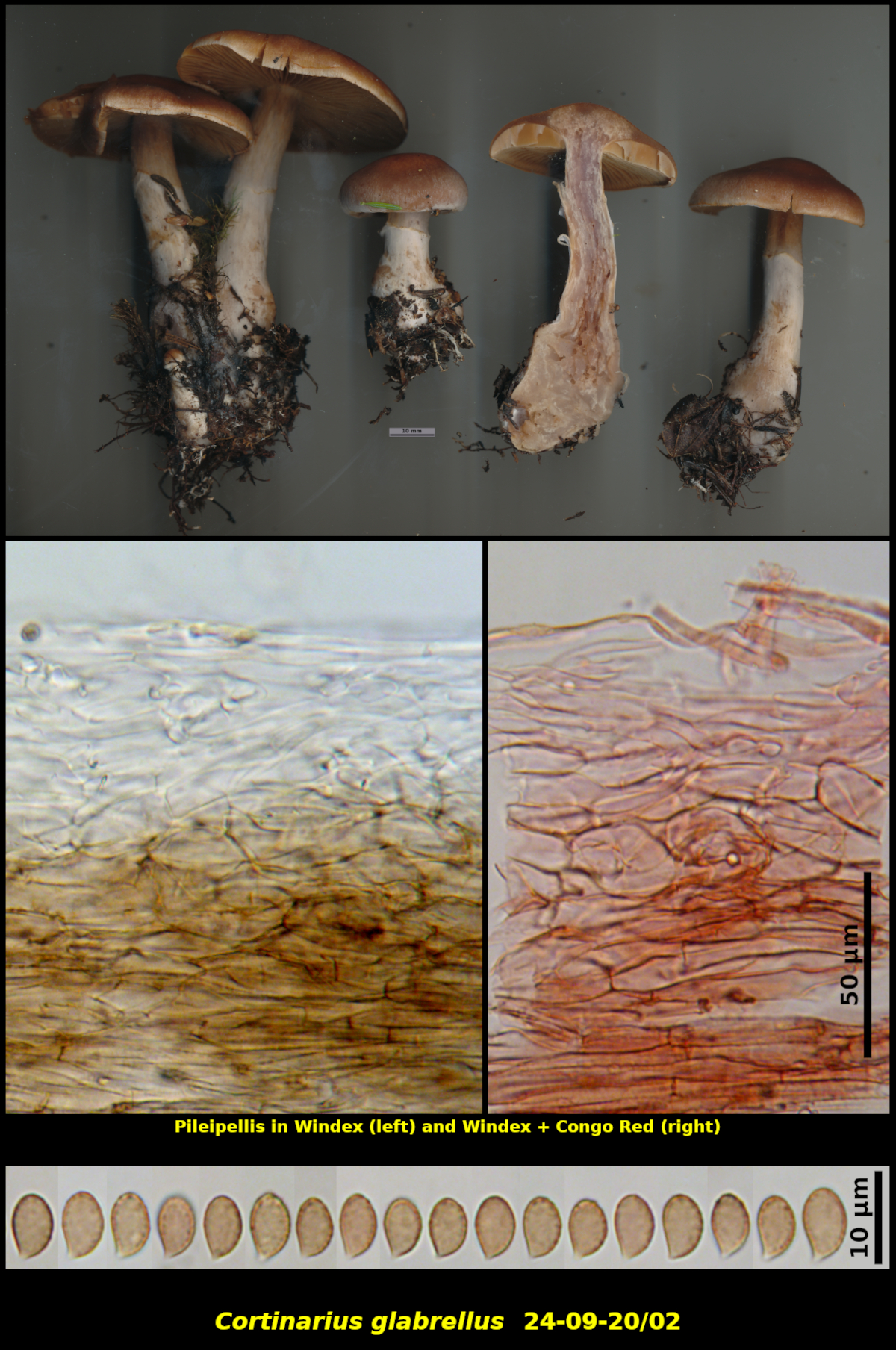Fleshy Fungi of New Brunswick >>
Cortinarius glabrellus
Cortinarius glabrellus Kauffman

Gregarious to clustered (6) among gametophytes of Pleurozium schreiberi at margin of gravel driveway, associated with and Betula cordifolia and Abies balsamea, Little Lepreau, New Brunswick (24-09-20/02).
Pileus conical at first, expanding to broadly covex at maturity, with a low rounded umbo, dry to moist, glabrous, dull orange (HSV25:60:70-80) on the umbo, light brown (HSV15:30:50-60) elsewhere, hygrophanous, darkening in 3% KOH but without colour changes, 32-63 mm in diameter. Stipe clavate, with a bulbous base, dry, with a white sheath-like universal veil extending from the base to the annular zone, very pale brownish white above the annular zone, 72-100 x 8-10 mm. Lamellae light orange brown (HSV30:30-40:80), close, adnate to adnexed, not marginate. Cortina abundant, white. Universal veil abundant, white. Flesh concolorous with the surface tissues in the pileus but fading to white as it dries, pale dull orange yellow (HSV30:10-20:80) in the stipe, darkening in 3% KOH but without colour changes, with a nondescript odour and taste. Note: the scans show a distinct violaceous colour at the apex of the stipe.
Basidiospores orange brown in spore print, dacryoid, usually with a pronounced suprahilar depression, coarsely roughened, 6.1-7.5 x 3.8-4.7 μm, Q = 1.48-1.71 (average[53]: 6.6 x 4.2 μm, Q = 1.58). Hymenial cystidia lacking. Basidia 4-spored, with a basal clamp connection. Pileipellis a series of three distinct layers; 1) a thin hyaline cutis of narrow hyphae that may be slighly gelatinous, 2) a thicker hyaline zone of shorter and broader cells, 3) a compact layer of brown narrow hyphae with conspiculous pigment encrustations. Pileus trama parallel, of loosely arranged and nearely colourless hyphae.
Collection 24-09-20/02 is close to C. subbalustinus R. Henry, a European species. It is a good match for the plate in Cortinarius Flora Photographica (Brandrud et. al. 1992, Plate B03). Kauffman’s description of C. glabrellus in N.A. Fora 10(5): 340. 1932) is also a good match and has similarly small basidiospores described as 6-8.5 x 4.5 μm. Cortinarius subbalaustinus is said to have basidiospores 7-9 x 4.5-5.5 μm. Both species are reported from Quebec (Landry et al., Répertoire des cortinaires du Québec).
A member of Cortinarius subgenus Telamonia section Subbalaustini, C. glabrellus is characterized by its light orange to orange brown only slightly hygrophanous pileus, clavate stipe, peronate (sock-like) veil extending up to the annular zone of the stipe and by its small dacryoid basidiospores.
Photograph: D. Malloch (24-09-20/02).